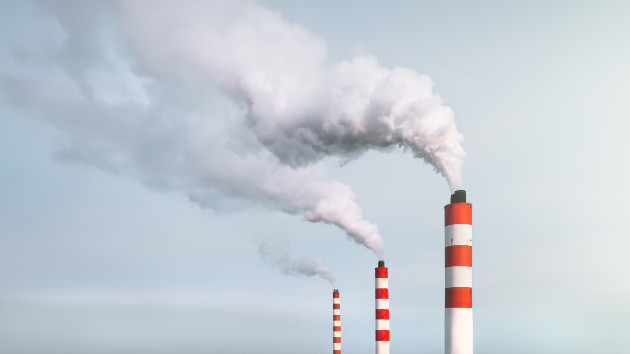(NEW YORK) — The Anaconda Smelter Stack has been a towering landmark for the town of Anaconda, Montana, but it was also one of the factors behind the decades of environmental damage that is still being cleaned up.
Standing at over 585 feet tall, the stack was once used as part of the town’s copper processing and spread heavy metals and arsenic over 300 square miles, destroying vegetation and killing animals.
But after more than decades of pollution remediation work by the U.S. Environmental Protection Agency and other groups, the city has been on the rebound. Greener grass, cleaner homes, and even an 18-hole golf course have popped up in the last couple of years.
“So to have a lot of this vegetation coming back, it’s really, really something neat,” said Charlie Coleman, the former project manager for the EPA’s Anaconda Smelter Remedial project.
And while Coleman and others said Anaconda’s turnaround is a success story that can be replicated across the country, residents in other parts of the state that are dealing with similar pollution fallout say they need more work and resources.
From 1884 to 1981, copper ore processed in Anaconda helped electrify the nation, and made coins, car radiators, air conditioning systems and other machines.
In 1983, two years after the copper plant closed down, the EPA designed the plant a Superfund site after it was determined that the nearby soil and water were polluted with hazardous chemicals.
Coleman worked in tandem with various government agencies, city officials and the mine’s owner, the Atlantic Richfield Company, which is a subsidiary of BP, to remove contaminants from the soil and waterways to acceptable levels.
Among the work done was removing 3 million cubic yards of waste, replanting new vegetation, wetlands and soil, cleaning local rivers and removing toxic dust from attics.
“We’ve cleaned up nearly three-quarters of the community,” Coleman said, adding that work will continue for at least one more year.
Some slate piles could not be moved, so the environmentalists came up with a plan to cover the piles and revegetate on top of them.
The EPA said the clean dirt on top dilutes any lingering containments to acceptable levels, under 400 parts per million.
Anaconda was recently taken off the EPA’s Superfund list.
Bill Everett, the CEO of the Anaconda-Deer Lodge County, told ABC News that the town struggled economically due to the pollution, but the cleanup has now led to a rise in developments, businesses attractions and new residents.
“The community had to scramble, find employment elsewhere, move in other directions, and try to somehow make this an economically stable community. Unfortunately, it wasn’t for 40 years and we’re just now finally starting to recover from that,” Everett said.
Environmentalists said the Anaconda smelter stack spread pollution throughout the area, and residents of nearby Butte, Montana said they’ve been disappointed with the Superfund cleanup effort in their community so far.
Butte was once the site of copper mining and the town sent their ore to Anaconda for processing, however, the operation left mine waste like lead and arsenic all over the community.
“I grew up across the street from mine dump that was called the Yellow Hill,” Butte resident Bill Foley told ABC News. “We’d go play on it and ruin our shoes, now you think about it and it’s crazy that we live like that.”
One of the town’s most contaminated sites is the Berkeley Pit, a colossal hole in the ground that’s flooded with one of the largest bodies of polluted water in the United States.
Cleanup has been going on since the 1980s but residents said the remediation efforts have been slow as the hillsides have many dead zones and there is toxic wastewater in the creek that runs through the middle of town.
Evan Barrett, a Butte resident, told ABC News that he has been frustrated by the EPA’s lead contamination guidelines that state levels must be 1,200 parts per million. Anaconda’s Superfund standards were 400 parts per million, according to Barrett.
“We have three times as much lead in the soil than they do over in Anaconda which makes no sense whatsoever,” he said.
There appears to be some hope as the EPA recently released new national guidance on lead contamination that may lead to a reduction in that 1,200 parts per million standard.
Aaron Urdiales, the director of Superfund and emergency management division for EPA Region Eight, told ABC News that he is aware of Butte residents’ concerns and noted that the data shows a decline in blood lead levels in the town.
“We’ve upped our public engagement. We’re pushing more for transparency within the data. But we do understand the concerns,” he said.
Copyright © 2024, ABC Audio. All rights reserved.







